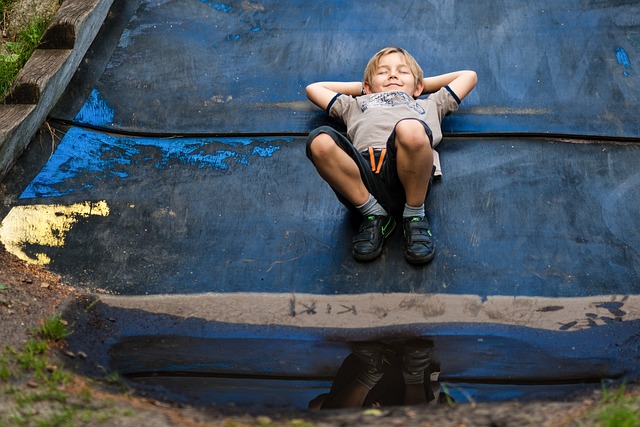Juvenile legal advocacy creates safe, nurturing environments for children by navigating complex systems and amplifying their voices. This involves comprehensive risk assessment, physical safety measures, open communication, and community engagement. By fostering trust, building support networks, and providing tailored resources, these approaches promote emotional well-being and resilience, enabling children to thrive in both legal systems and communities.
“Fostering safe and nurturing environments is paramount for a child’s healthy development. This article explores comprehensive strategies to achieve this, focusing on the critical role of juvenile legal advocacy as a cornerstone in building protective systems. We delve into identifying and mitigating risks within children’s surroundings, offering practical approaches to create welcoming spaces. Additionally, we emphasize community engagement and collaboration, highlighting their essential role in driving long-lasting positive change for vulnerable youth.”
Understanding Juvenile Legal Advocacy: The Cornerstone of Safe Environments
Creating safe and nurturing environments for children is intricately linked to understanding the role of juvenile legal advocacy. This field focuses on ensuring that young individuals involved in the justice system receive fair treatment and support tailored to their unique needs. By advocating for their rights, Juvenile Legal Advocates play a pivotal role in fostering environments that promote healing and growth rather than punishment.
Effective advocacy means navigating complex systems, including legal, social, and emotional landscapes, to ensure children’s voices are heard. It involves providing guidance, representation, and resources to mitigate the potentially traumatic effects of systemic involvement. Through this advocacy, children can access necessary services, receive appropriate interventions, and develop a sense of security, all of which contribute to building robust and supportive environments where they can thrive.
Identifying and Addressing Risks in Children's Surroundings
Creating safe spaces for children is a multifaceted endeavor that requires a keen eye for identifying and mitigating risks within their environments. Juvenile legal advocacy plays a pivotal role in ensuring that children are protected from potential dangers both at home and in their communities. This involves meticulously assessing various aspects of a child’s surroundings, including physical structures, social interactions, and access to resources.
By recognizing risks such as unsafe housing conditions, exposure to violence, or limited access to healthcare, advocacy groups can intervene effectively. They collaborate with relevant authorities, service providers, and families to address these issues proactively. This holistic approach fosters a nurturing environment where children feel secure, enabling them to thrive and develop resilience in the face of adversity.
Strategies for Creating Nurturing Spaces: A Comprehensive Approach
Creating nurturing environments is a multifaceted process that requires a comprehensive approach, especially within the context of juvenile legal advocacy. One key strategy involves ensuring physical safety and comfort. This includes designing spaces that are free from potential hazards and providing cozy areas for children to relax and feel secure. A child-friendly environment can significantly impact their emotional well-being, making them more receptive to learning and support.
Additionally, fostering a sense of belonging is vital. Implementing policies and practices that encourage open communication, respect, and empathy creates a supportive atmosphere. Juvenile legal advocacy groups should aim to build trust by actively listening to children’s concerns, validating their emotions, and involving them in decisions that affect their lives. This holistic approach not only ensures physical safety but also nurtures emotional resilience, enabling children to thrive both within the environment and in their interactions with legal systems.
Community Engagement and Collaboration for Long-Lasting Positive Change
Community engagement is a cornerstone in fostering safe and nurturing environments for children, particularly within the context of juvenile legal advocacy. When communities come together, they can drive sustainable positive change that extends far beyond immediate interventions. By collaborating with local organizations, schools, churches, and businesses, we create a collective responsibility for the well-being of our youth. This collaborative approach ensures that support systems are in place both inside and outside of traditional legal settings, providing a comprehensive safety net for vulnerable children.
Such partnerships can lead to innovative solutions tailored to the unique needs of each community. For instance, community members might establish mentorship programs, after-school activities, or resource centers that address underlying issues often faced by at-risk youth. This proactive engagement not only empowers individuals but also strengthens the social fabric, reducing recidivism rates and promoting long-term resilience among children.
Creating safe and nurturing environments for children is a multifaceted endeavor that requires a strong foundation of understanding and collaboration. By leveraging the power of juvenile legal advocacy, identifying and mitigating risks in their surroundings, implementing comprehensive strategies, and fostering community engagement, we can revolutionize the way we support young individuals. These interconnected approaches ensure that every child has access to a stable, supportive environment, paving the way for their holistic development and a brighter future.
